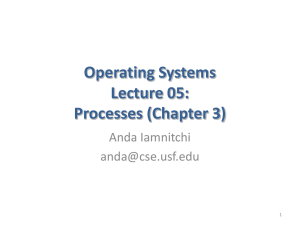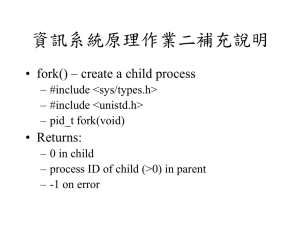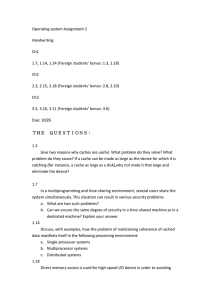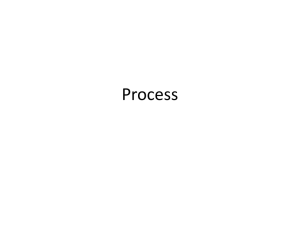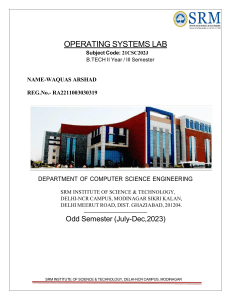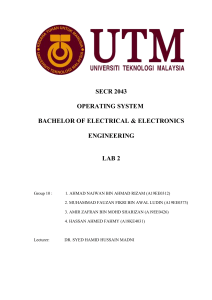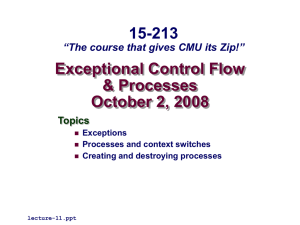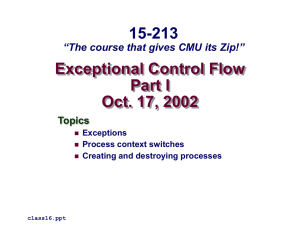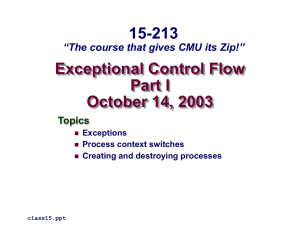Unix Processes
advertisement
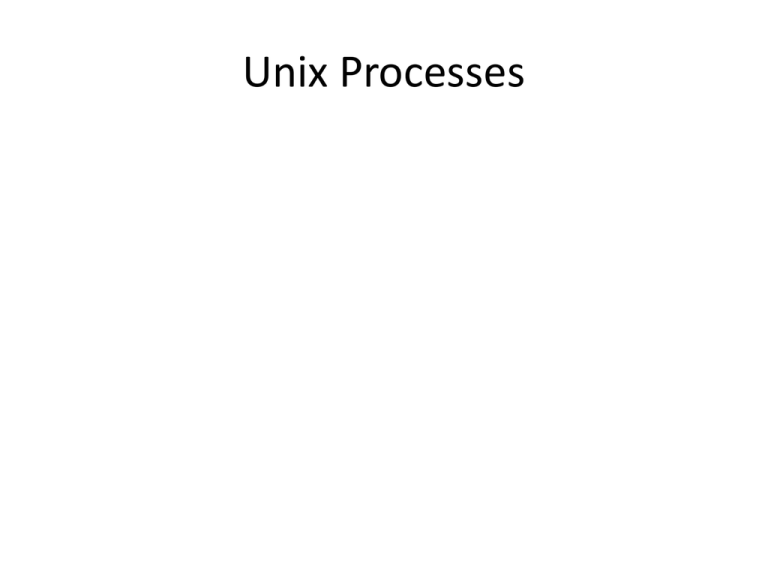
Unix Processes Process creation • Four common events that lead to a process creation are: 1) When a new batch-job is presented for execution. 2) When an interactive user logs in / system initialization. 3) When OS needs to perform an operation (usually IO) on behalf of a user process, concurrently with that process. 4) To exploit parallelism an user process can spawn a number of processes. Page 2 Termination of a process • Normal completion, time limit exceeded, memory unavailable • Bounds violation, protection error, arithmetic error, invalid instruction • IO failure, Operator intervention, parent termination, parent request, killed by another process • A number of other conditions are possible. • Segmentation fault : usually happens when you try write/read into/from a non-existent array/structure/object component. Or access a pointer to a dynamic data before creating it. (new etc.) • Bus error: Related to function call and return. You have messed up the stack where the return address or parameters are stored. Page 3 Process control • Process creation in unix is by means of the system call fork(). • OS in response to a fork() call: – Allocate slot in the process table for new process. – Assigns unique pid to the new process.. – Makes a copy of the process image, except for the shared memory. – both child and parent are executing the same code following fork() – Move child process to Ready queue. – it returns pid of the child to the parent, and a zero value to the child. Page 4 Process control (contd.) • All the above are done in the kernel mode in the process context. When the kernel completes these it does one of the following as a part of the dispatcher: – Stay in the parent process. Control returns to the user mode at the point of the fork call of the parent. – Transfer control to the child process. The child process begins executing at the same point in the code as the parent, at the return from the fork call. – Transfer control another process leaving both parent and child in the Ready state. Page 5 Process Creation (contd.) • Parent process create children processes, which, in turn create other processes, forming a tree of processes • Generally, process identified and managed via a process identifier (pid) • Resource sharing – Parent and children share all resources – Children share subset of parent’s resources – Parent and child share no resources • Execution – Parent and children execute concurrently – Parent waits until children terminate Page 6 Process Termination • Process executes last statement and asks the operating system to delete it (exit) – Output data from child to parent (via wait) – Process’ resources are deallocated by operating system • Parent may terminate execution of children processes (abort) – Child has exceeded allocated resources – Task assigned to child is no longer required – If parent is exiting • Some operating system do not allow child to continue if its parent terminates – All children terminated - cascading termination Page 7 Example Code 1. int retVal; 2. 3. printf(" Just one process so far\n"); printf(" Invoking/Calling fork() system call\n"); 4. retVal = fork(); /* create new process*/ 5. 6. if (retVal == 0) printf(" I am the child %d \n",getpid()); 7. 8. else if (retVal > 0) printf(" I am the parent, child has pid %d \n", retVal); 9. 10. else printf(" Fork returned an error %d \n", retVal);
